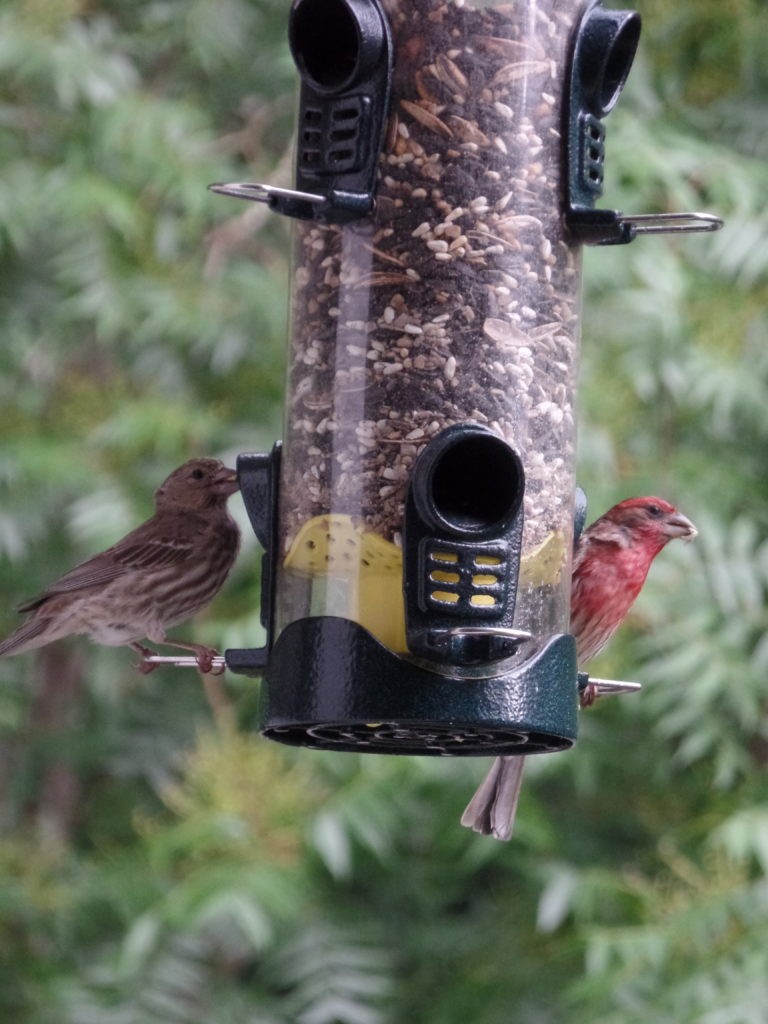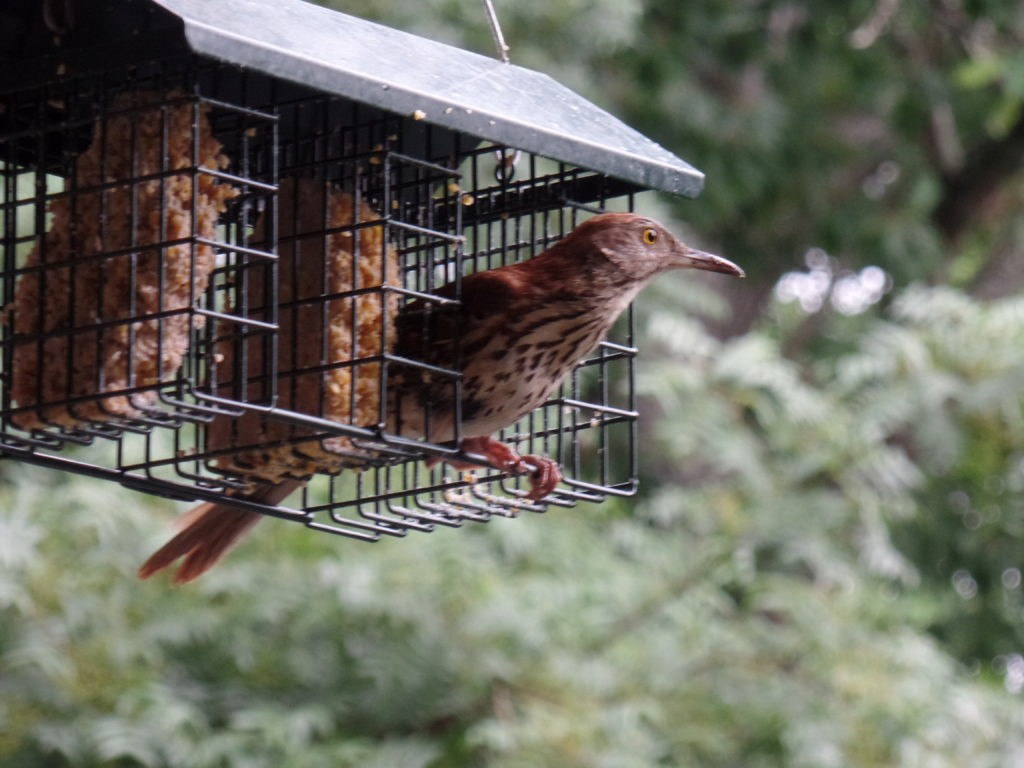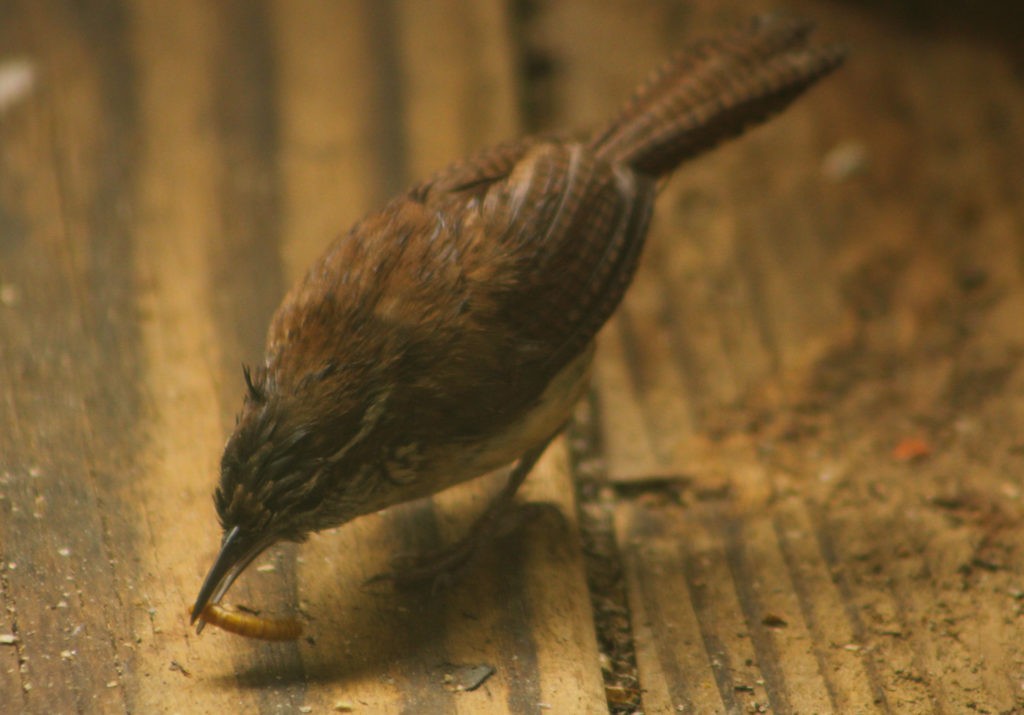Finding a Connection to Nature through feeding birds
What food should I use in my birdfeeder?
By Rebekah Dolan, Visitor Services Associate
August 24, 2020
I think my first experience of feeding birds was when I was a child growing up in New York City and my mother would take my siblings and I to the park on Saturdays to feed the seagulls. I remember being fascinated by how the gulls would ride the wind and hover above us. Some of my fondest memories of growing up were of observing pigeons in Central Park and it has become a tradition for me every time I go back home to visit. To this day I have a soft spot in my heart for gulls and pigeons.
I first started hanging a bird feeder in honor of my grandfather who always had a love of wild birds and had several feeders at his house in upstate New York’s Catskill Mountains. These days I live in an apartment in Sandy Springs and I hang about 5 different feeders on my apartment balcony and have been able to attract a wide variety of bird species to my home even in my semi-urban environment. It just goes to show you that you don’t have to have a house with a yard to begin feeding birds and enjoying the wonder of watching them arrive just outside your windows!
The best way to attract lots of different birds, is to offer a wide variety of different foods at your feeders. Different species prefer different snacks, so the more options you have, the more birds you will see. Some feeders I put out seasonally and some I keep up year-round. The type of feeder you choose is important as well as different birds have different preferred eating habits. Lots of birds will eat while perched, but others prefer to munch on the ground or on a platform. Here are some tips on common seed and food types to use and what birds you can attract with each type of food:
Sunflower Seeds – They come in two varieties – striped and black oil sunflower – and are a great all-around favorite. At my home feeders I have seen Cardinals, Carolina Chickadees, Carolina Wrens, Tufted Titmice, both White-Breasted and Brown-headed Nuthatches, Eastern Towhees, and House Finches all eating my sunflower seeds. You can also buy sunflower seeds pre-shelled in case you don’t like sweeping up the shells off the floor or ground.
Safflower Seeds – these are another great favorite among Cardinals and Grosbeaks.
Nyjer or Thistle Seed – these seeds are great to attract Goldfinches, and depending on the time of year, you may also see Indigo Buntings and Pine Siskins enjoying it as well.
White Millet Seed – this seed is favored by Doves, Towhees, Juncos, and Cardinals. It is also a favorite with Cowbirds and House Sparrows, so if you prefer not to attract these birds, you might want to avoid this seed in your feeders.
Peanuts – popular with Blue Jays, Crows, Chickadees, Wrens, Tufted Titmice, and Woodpeckers.

Red Millet – this is one you actually want to avoid. Many companies use this as a filler in seed mixes, but most birds don’t like it.
Suet – this type of food is typically made from beef fat and usually has seeds mixed in. It is great to attract Woodpeckers and is also popular with Chickadees, Wrens, Nuthatches, and Blue Jays. At my feeders I have also seen Easter Bluebirds, Pine Warblers, Yellow-rumped Warblers, Brown Thrashers, and the occasional Mockingbird and Grey Catbird come to eat my suet. You can buy suet at the store or make your own at home. You can even make a vegetarian suet using peanut butter and vegetable shortening instead of beef fat.

Dried or Preserved Mealworms – these may look and smell pretty icky, but they are a huge favorite with Eastern Bluebirds. I also see Carolina Wrens, Tufted Titmice, and the occasional Cardinal enjoy eating the worms.

On my apartment balcony I keep one seed feeder with a seed mix that includes both types of sunflower seeds, safflower seeds, and peanuts. I also have a separate suet feeder, a feeder for the mealworms, and I also put out a Nyjer thistle seed feeder and Hummingbird feeder seasonally. Since I’m in an apartment, it also helps that I keep several potted plants on my balcony as well as a bird bath to help my small space seem more inviting. Doesn’t hurt that there are lots of trees near my building as well.
If you are feeding birds at your home, inevitably you will meet the bird-feeder’s most tenacious foe – the squirrel. Squirrels can empty your bird feed pretty quick and make it much harder for you to enjoy watching your feathery friends. Since I do not have a yard, I have opted for squirrel-proof feeders. There are a lot of options for “squirrel-proof” feeders out there, but the ones I have found most effective are those that close up when weight is put on them. If you have a yard, simply placing your feeder on a tall pole away from anything that a squirrel can climb on or jump from is an easy solution. You can also try coating your seed in Flaming Hot Squirrel Sauce. You’ll find your birds don’t mind the spicy-ness, but most squirrels really don’t like it. You can buy the sauce separately, or buy seed that is already coated in it. Just a warning to always wear gloves and wash your hands thoroughly after handling the squirrel sauce or it can be very irritating to eyes and skin. You definitely don’t want to use it to season your taco!
Whether you’ve been enjoying feeding birds for years, like me, or are just wanting to get started on your first birdfeeder, a great time to stock up on your seed needs is the Chattahoochee Nature Center’s Fall Birdseed Sale! You can pre-order your seed, suet, or squirrel sauce September 4 through 13, and come pick it up in the Nature Store September 17-19. CNC members save 15% on all bird seed so it’s the perfect time to stock up for your feathery friends. Order your seed online and come visit and watch the wild birds on CNC’s beautiful grounds when you pick up your birdseed. Happy birding, friends!
